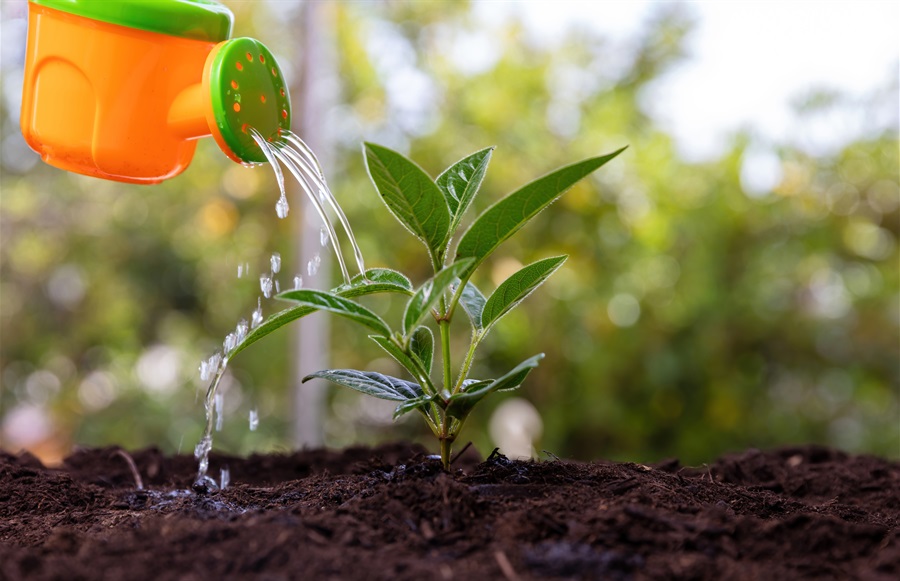Water Restrictions and Conservation

The City of North Port is committed to preserving our valuable water resources by encouraging residents to remain conservative in their water use and enforcing the current watering restrictions set forth by Southwest Florida Water Management District (SWFWMD).
If you have any questions, please call North Port Utilities at (941) 240-8000.
Established Lawns and Plants
Lawn watering is limited to no more than twice per week. Hand watering and micro-irrigation of plants (other than lawns) can be done on any day and any time. Lawn watering days and times are as follows unless your city or county has a different schedule or stricter hours in effect:
- Even addresses may water on Thursday and/or Sunday before 10 a.m. or after 4 p.m.
- Odd addresses may water on Wednesday and/or Saturday before 10 a.m. or after 4 p.m.
- Locations without a discernible address, such as rights-of-way and common areas inside a
subdivision, may water on Tuesday and/or Friday before 10 a.m. or after 4 p.m.
New Lawns and Plants
- New lawns and plants have a “30-30” establishment period.
- On the day of installation, watering is allowed on any day at any time.
- During the first 30 days, watering is allowed on any day during the allowable hours.
- During the second 30 days, watering is allowed three days per week: even-numbered addresses may water on Tuesday, Thursday and Sunday; odd-numbered addresses may water Monday, Wednesday and Saturday; and locations without a discernable address may water on Tuesday, Friday and Sunday.
Reclaimed water remains subject to voluntary watering hours, but the City encourages customers to use reclaimed water
Fountains, Car Washing and Pressure Washing
- There are no specific restrictions on fountains, car washing and pressure washing.
- These and other water uses should be conducted as efficiently as possible, such as using a shutoff nozzle on each hose to adhere to the general restriction prohibiting wasteful water use.
Conserving Water
Picking up small water conservation habits not only saves water but saves money on your Utilities bill!
Florida-Friendly Landscaping
Florida-Friendly landscapes protect Florida’s unique natural resources by conserving water, reducing waste and pollution, creating wildlife habitat and preventing erosion. Any landscape can be Florida-Friendly if it is designed and cared for according to the nine Florida-Friendly Landscaping principles, which encourage individual expression of landscape beauty.
- Right plant, right place
- Fertilize appropriately
- Use mulch
- Attract wildlife
- Manage yard pests responsibly
- Properly dispose of yard waste
- Reduce stormwater runoff
- Water efficiently
- Protect the waterfront
Learn more about Florida-Friendly Landscaping
Save a Drop
Finding small ways to save water around your home can lead to large savings on your utilities bill.
- Take shorter showers
- Turn off your bathroom faucet while brushing teeth
- Only run appliances like dishwashers or washing machines when the load is full
- Reuse cooking water for watering plants
- Consider low flow water fixtures for your home
Detecting a Leak
If you start seeing an increase in your water use on your bill, but have not changed your water use habits, then you might have a leak.
- Check for toilet leaks. Pick up a free dye tablet from the Utilites cashiering counter at City Hall. Remove your toilet tank lid and drop a dye tablet into the tank. Allow the dye to sit in the tank for at least 15-30 minutes, without flushing the toilet. After the waiting period, examine the toilet bowl. If you see any color in the bowl, it indicates a leak from the tank to the bowl.
- Read your water meter. Turn off the water inside and outside your house, then check your meter. If the leak detection triangle is moving, you may have a leak
- Check for pooling water under your sinks, around your dishwasher, refrigerator with an ice maker, your water heater and your washing machine.
Skip a week of watering
During cooler months in fall and winter, your lawn doesn’t need watering every week. It’s the best time to train your yard to need less water! Only water your lawn every other week and only if it needs it.
For the lawn, you’ll spot these signals if it needs water:
- Leaf blades are folded in half lengthwise.
- Grass has a blue-gray hue instead of bright green.
- Lawn does not bounce back as quickly after footprints and tire tracks are made.